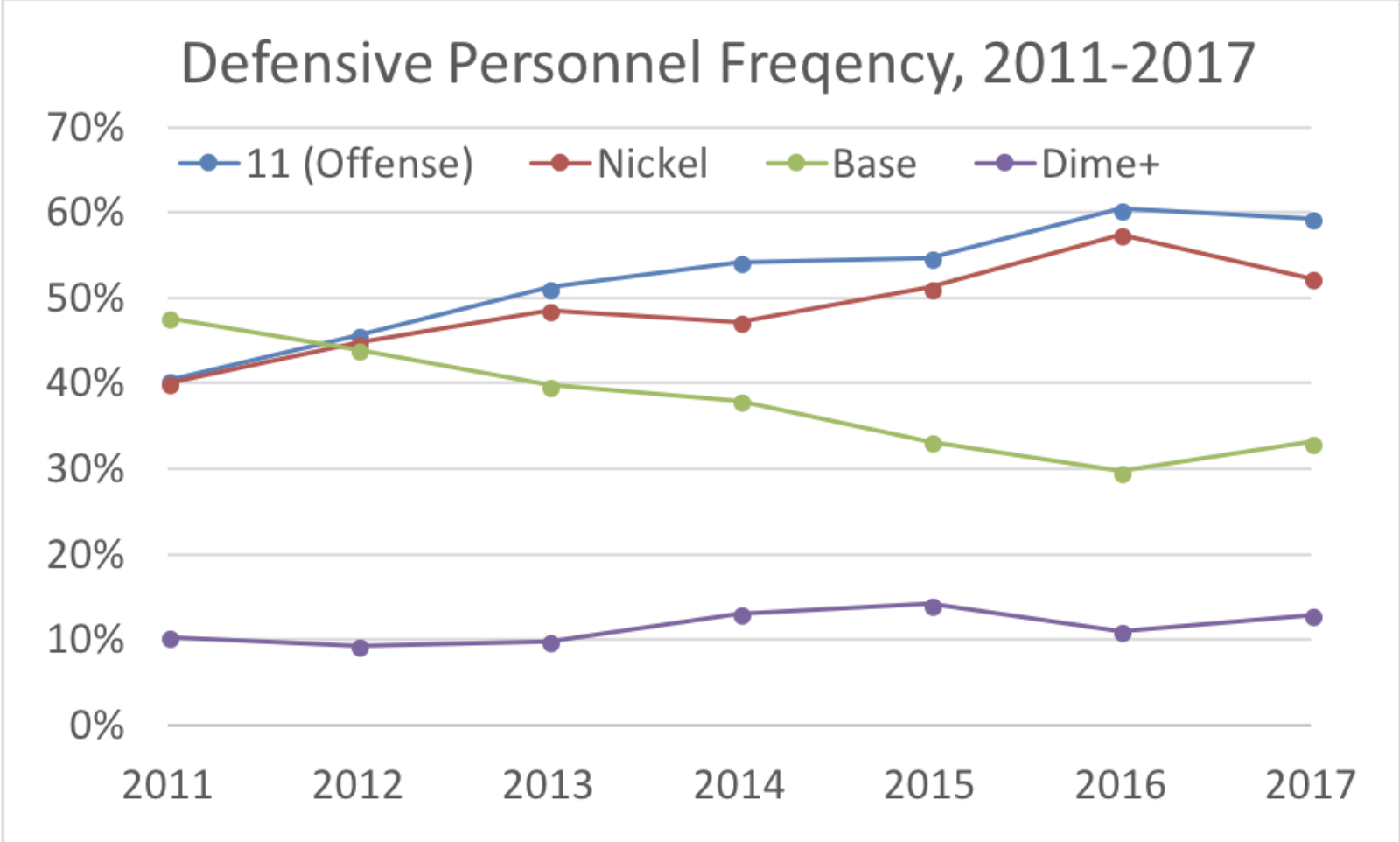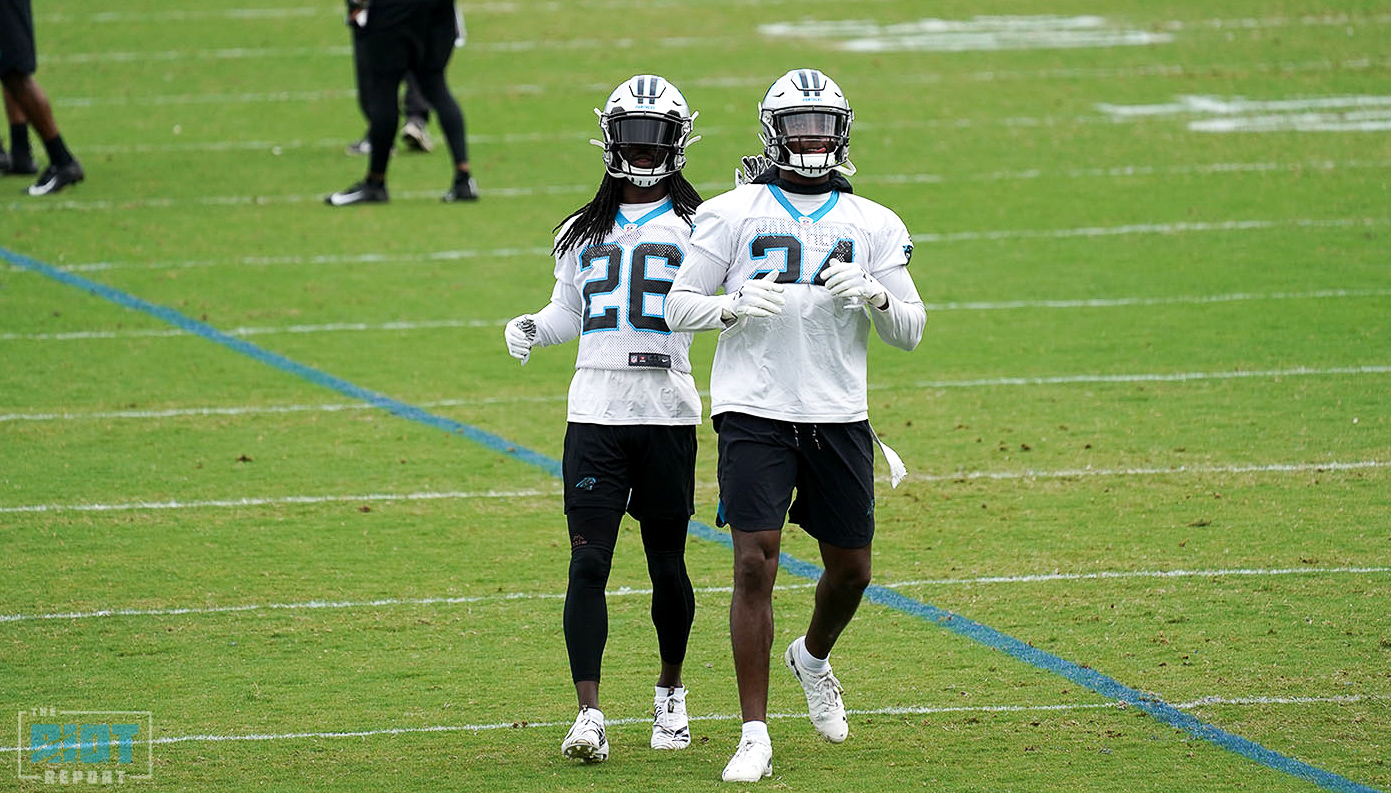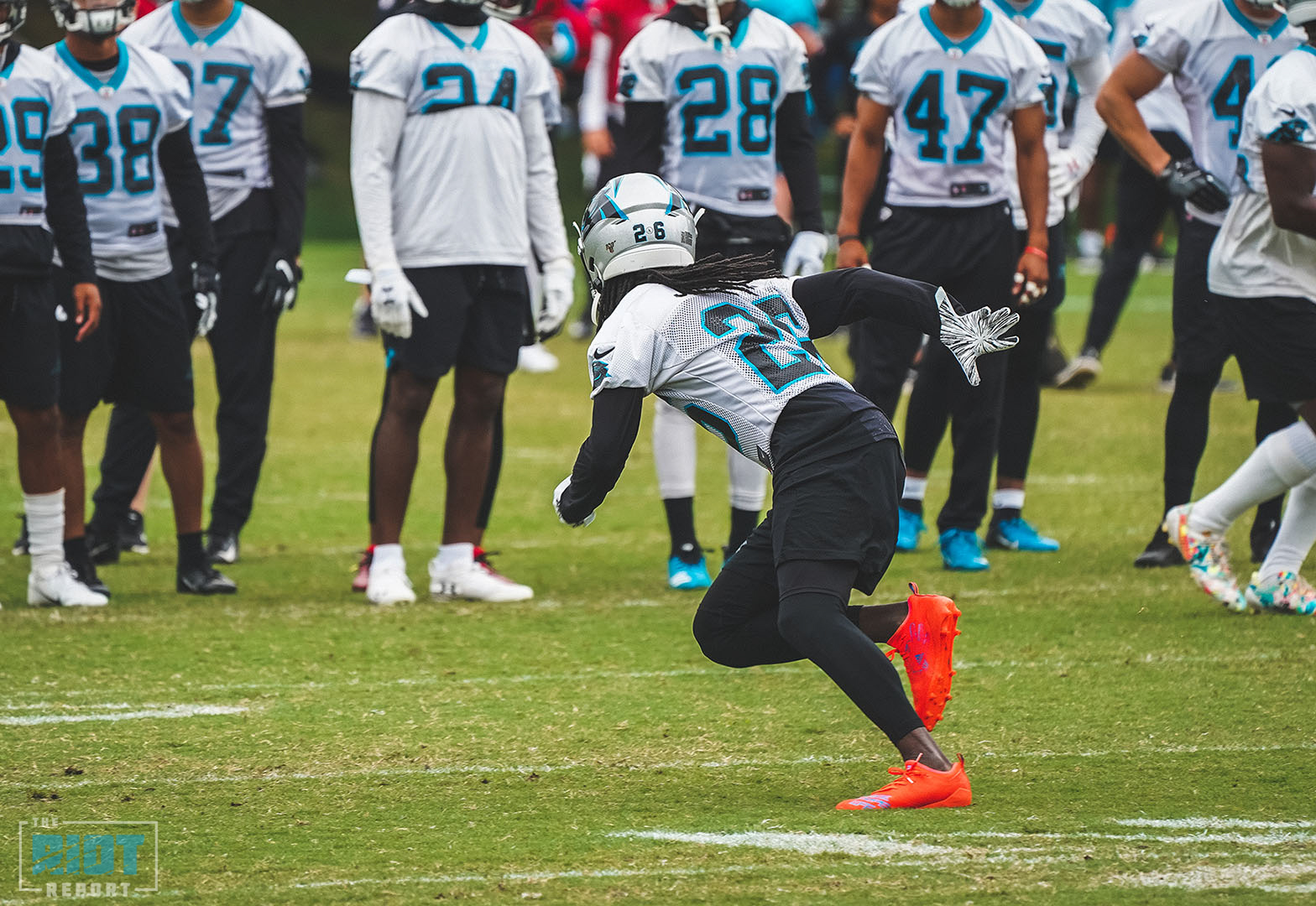When we talk about the NFL, we often do so using terminology such as ‘starter’ and ‘backup’, ‘outside corner’ and ‘nickel’ – but, as with many things, the actual product on the field often goes beyond what the language we use to describe it is able to convey.
Don’t worry, this isn’t a piece on the imperfections of language and the limitations of human expression, but rather a look at how the way we think about the NFL – and cornerbacks in particular – is somewhat out of date, and that the NFL terminology hasn’t yet caught up to what some teams, including the Panthers, are trying to do.
This is a similar, though slightly different, conversation to the one surrounding the idea of a ‘base’ defense.
With the NFL moving more and more towards three and four wide receiver formations, defenses spend the vast majority of their time playing in what would historically be viewed as a nickel defense. While this has repercussions for the way teams look to use their linebackers and safeties as well, one of the biggest impacts of this shift has been on the cornerback position, with teams playing three or more cornerbacks far more than they did in decades past.

Chart Via FootballOutsiders.com
What this means is that the idea of a starting pair of “outside” corners with a nickel who comes on when the offense goes three-wide no longer really makes much sense in terms of describing what is actually going on on the field. Of course, some teams have made more of a shift than others in this regard, but there is a distinct shift away from the idea of starters and backups and towards a matchup based approach to cornerback play, with teams looking to rotate defenders based on which players the offense puts out, not just which positions they play.
This is something that Ron Rivera spoke about a year ago when they drafted Donte Jackson:
“When you look at his skillset, there are going to be some matchups. There really are. Look at what James Bradberry does for us on the big wide receivers. You pare that down and you get the 5-8, 5-9, 5-10 receivers that are quick – we have a guy that can match him now. We feel very comfortable about doing that now.”
Marty Hurney also spoke to this idea at the time, even fleshing it out a little in terms of what it might mean for the Panthers in particular:
“We talk about intermixing skill sets,” said Hurney. “Well, now we have a guy like Donte. We have Kevon [Seymour], who can run. We have got big corners with Bradberry and Ross Cockrell.”
Of course, all this went out the window last season with both Kevon Seymour and Ross Cockrell getting hurt in training camp, forcing the Panthers into treating Bradberry and Jackson much more like a conventional starting pair, with Captain Munnerlyn being forced to take what snaps were left in the slot – however, with both Cockrell and Seymour back healthy for training camp, the 2019 Panthers may well look to implement what was meant to be the plan for the 2018 Panthers.

A helpful way of looking at this might be to consider how the Panthers matched up defensively against the 2018 Buccaneers receivers, who had a conventional bigger receiver in Mike Evans, a speed guy in DeSean Jackson, a shifty slot guy in Adam Humphries and a bigger rotational receiver in Chris Godwin.
James Bradberry is a natural option to cover Evans, Donte Jackson matched up well against Jackson and Ross Cockrell is another bigger cornerback to cover Chris Godwin. The one issue is, and has been for a while, that the Panthers don’t have a clear option to cover smaller quicker receivers in the slot, though Kevon Seymour will likely get the first shake of that particular stick on the current roster.
The idea behind this kind of rotation system is really very simple – namely, that Donte Jackson might be a more valuable player than Ross Cockrell, but that doesn’t mean there aren’t receivers that Jackson matches up poorly against whom Cockrell is more suited to cover. As with many things in the NFL, the biggest proponent of this style of defense has been Bill Belichick, something which Cian Fahey spoke about on his Off The Ball Podcast last week:
“If you look at [Belichick’s] cornerback usage, and his rotations and how he plays cornerbacks … it’s not ‘these are my starting cornerbacks, there are my guys who are going to play’ … Belichick will give his specific cornerbacks specific player assignments each week,” said Fahey. “He will also have players in his starting lineup who will be inactive the following week because of the type of receiver they’re going against.”

The other advantage to a system like this is that it allows teams to get value from players who, while not having a hugely well-rounded skillset, are very good at one thing, in that case covering a particular type of receiver.
Of course, over the course of a season, the Panthers are likely to play against a wide variety of different receivers – a team like the Raiders doesn’t have a receiving corps that the Panthers’ defensive backs match up hugely well against – but by having a varied set of skillsets among their defensive backs the Panthers have the potential to create a coverage unit that is more effective than the sum of their parts and which defies the historic notions of ‘starters’ and ‘backups’.
This isn’t some huge revolution – the Panthers are still likely to have both James Bradberry and Donte Jackson on the field for the majority of snaps, the difference is more likely to come in who the third cornerback is at different points in the season and where the various cornerbacks line up on different snaps – but this is something the Panthers have been talked about for a while and which, health permitting, they are actually in a reasonably strong position to implement.
All of this is without considering the ability for Shaq Thompson to act as the ‘big nickel’ to cover tight ends when opponents are in 12 personnel – or Rashaan Gaulden coming down and manning up against a slot receiver and acting as a safety/nickel hybrid.
We know how much Ron Rivera values players that can play multiple positions.
There are going to be a lot of changes on defense compared to a year ago what with the switch to a primarily 3-4 front, but this is perhaps a more under-the-radar one which is worth keeping an eye out for as we get closer to Spartanburg.



